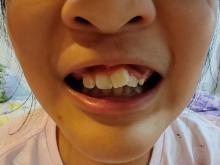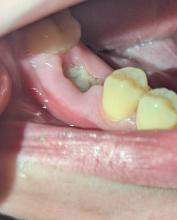Healthy Teeth, Happy Life.
Cervical Caries: The Silent Tooth Decay Plaguing Low-Income Filipinos
Language :

Topics:
The Silent Ache of Mindanao: Why Ignoring a Toothache Leads to Bigger Problems
In the vibrant, tight-knit community of Barangay Bagong Silang in Mindanao, life is rich in spirit but often lean in resources. Here, we meet Elena, a 42-year-old mother of three whose hands are always busy—washing clothes by the well, selling banana cue at the local stall, and comforting her children.
For months, a dull, persistent ache had taken root in one of Elena's back teeth. It would flare up with sweet coffee or a cold drink, a sharp, shocking pain that would just as quickly fade. "It's nothing," she'd tell herself, "just pasma or a little sensitivity." The thought of going to the dentist was a luxury her family's budget could not afford. That P500 for a check-up could buy a week's worth of rice. So, she endured, relying on over-the-counter painkillers and mumog with salt water.
But the problem was not nothing. It was growing silently, and worse things were coming.
Elena's story is a mirror reflecting a painful reality for many Filipinos: dental health is often the first thing to be neglected when finances are tight. We are a people who bear pain with a smile, but this particular neglect has severe and costly consequences.
The Hidden Destroyer: Cervical Dental Caries
What Elena was experiencing is a common yet often misunderstood dental problem: Cervical Dental Caries.
You may have heard of regular cavities, but cervical caries are specifically found at the tooth's neck, right where the tooth meets the gum line. This area is particularly vulnerable because the protective layer of enamel is thinner here.
Why is it so deceptive?
-
It starts subtly: It often begins as minor sensitivity to hot, cold, or sweet things—easy to ignore in its early stages.
-
It progresses silently: Unlike a cavity on the chewing surface that you might see, this decay creeps along the curve of the tooth, often hidden from plain view.
-
It attacks the core: Because it's located near the gum line, this decay has a short, direct path to the tooth's pulp (the nerve) and the root. This is why the pain can become severe quickly once the decay breaches the inner layers.
(Source: Smile Perfections, "Cervical Dental Caries")
For Elena, that "little sensitivity" was the outer enamel at the gum line being eroded away, exposing the softer, more vulnerable dentin beneath to acid and bacteria.
The Domino Effect of Neglect: What Happens When "Worse Comes"
Elena's "nothing" soon became a "something" she could no longer ignore. The dull ache turned into a constant, throbbing pain that kept her awake at night. Her face swelled slightly on one side. Chewing became impossible, and even her work suffered.
This is the domino effect of neglected dental caries:
-
Deep Infection & Abscess: The bacteria reach the tooth's nerve, killing it and forming a pus-filled abscess at the root tip. This is what caused Elena's swelling and severe pain.
-
Tooth Loss: If the decay and infection destroy too much of the tooth's structure, the tooth cannot be saved and must be extracted.
-
Systemic Health Risks: A dental abscess is not contained. The infection can enter the bloodstream, potentially leading to more serious health issues affecting the heart, sinuses, or even causing sepsis—a life-threatening condition.
-
Financial Catastrophe: What could have been solved with a simple, affordable filling (P1,000-P2,000) now requires a much more complex and expensive procedure like a root canal treatment (P8,000-P15,000+) or an extraction followed by a bridge or implant, which costs even more.
For a family like Elena's, this isn't just an inconvenience; it's a financial crisis.
Breaking the Cycle: Prevention and Affordable Action
Elena’s story doesn’t have to end with tooth loss. The key is shifting from reactive pain management to proactive, affordable prevention.
-
Proper Oral Hygiene is Non-Negotiable: Brushing correctly with a soft-bristled toothbrush and fluoride toothpaste, focusing on the gum line, is the most cost-effective defense. Flossing removes the plaque a brush can't reach.
-
Mind Your Diet: Reducing the frequency of sugary snacks and acidic drinks (like soft drinks and even calamansi juice) gives your teeth a fighting chance.
-
Seek Out Community Health Centers: Many local government units (LGUs) and NGOs run medical missions that include free or heavily subsidized dental check-ups and extractions. It's worth inquiring at your local rural health unit (RHU).
-
Don't Wait for Pain: Pain is a late-stage warning sign. If you notice any sensitivity, a visible notch at the gum line, or a discolored spot, seek advice before the pain starts. An early diagnosis is always simpler and cheaper to treat.
Elena, with the help of a neighbor, finally visited a municipal health center during a medical mission. The dentist explained the damage was too severe; the tooth had to be extracted. It was a hard lesson, but one that changed her family's approach to health. She now ensures her children brush properly and brings them for check-ups at the school clinic, determined to break the cycle of dental neglect.
Your oral health is not a luxury. It is a critical part of your overall well-being. Don’t let a small, manageable issue today become a painful and expensive crisis tomorrow.
Your smile is worth protecting. Schedule a check-up, inquire at your local health center, and take that first step towards breaking the cycle.








